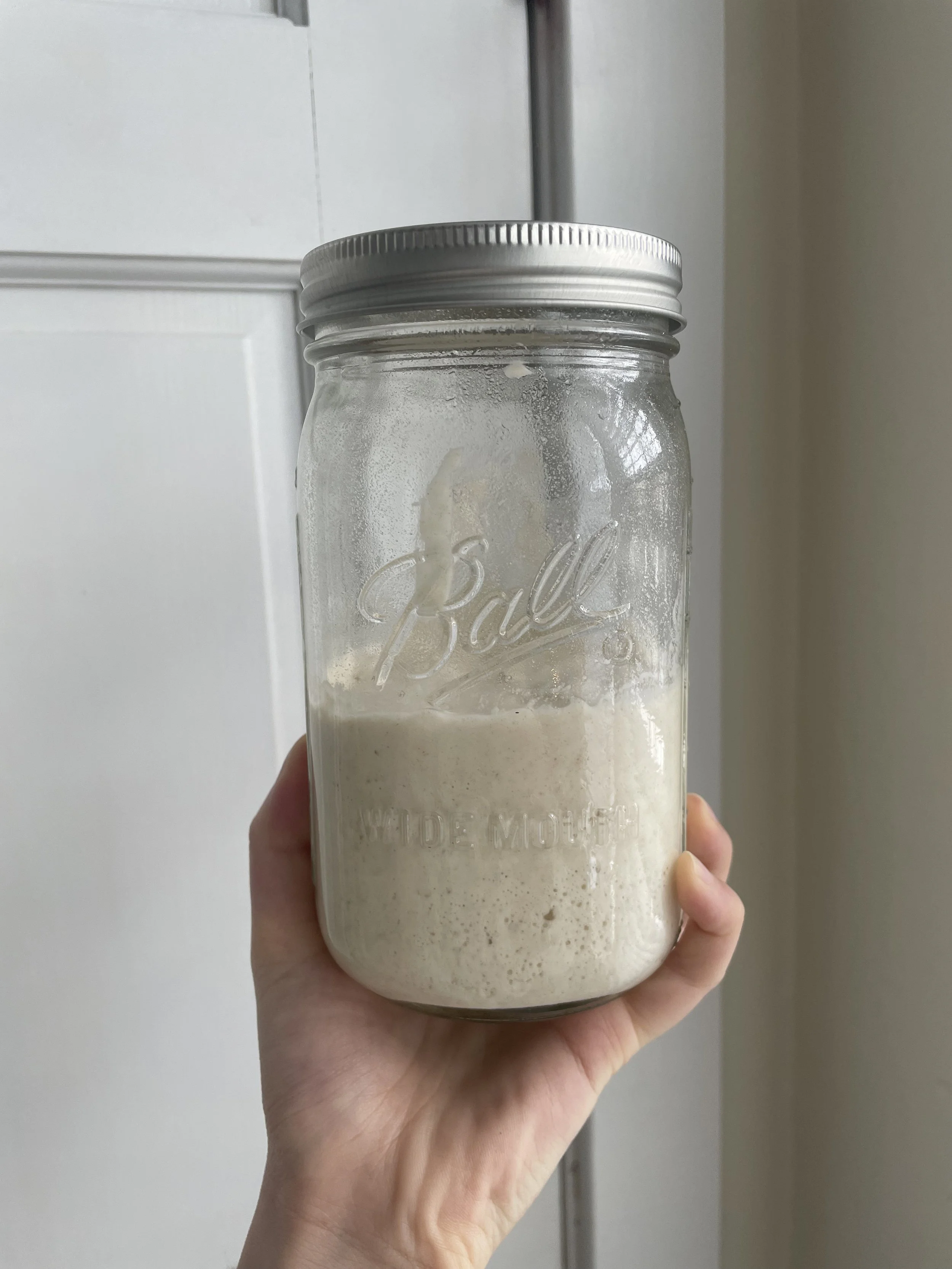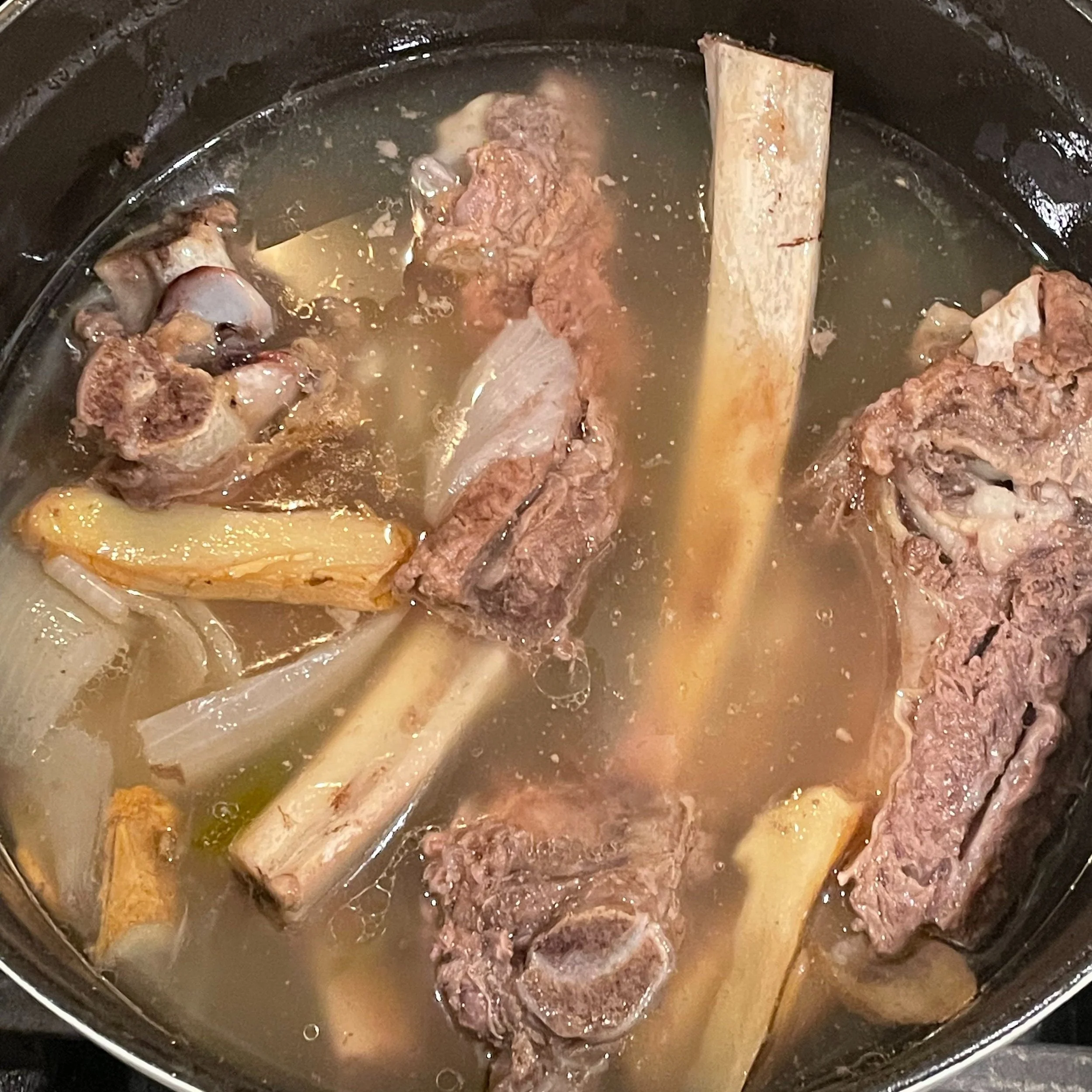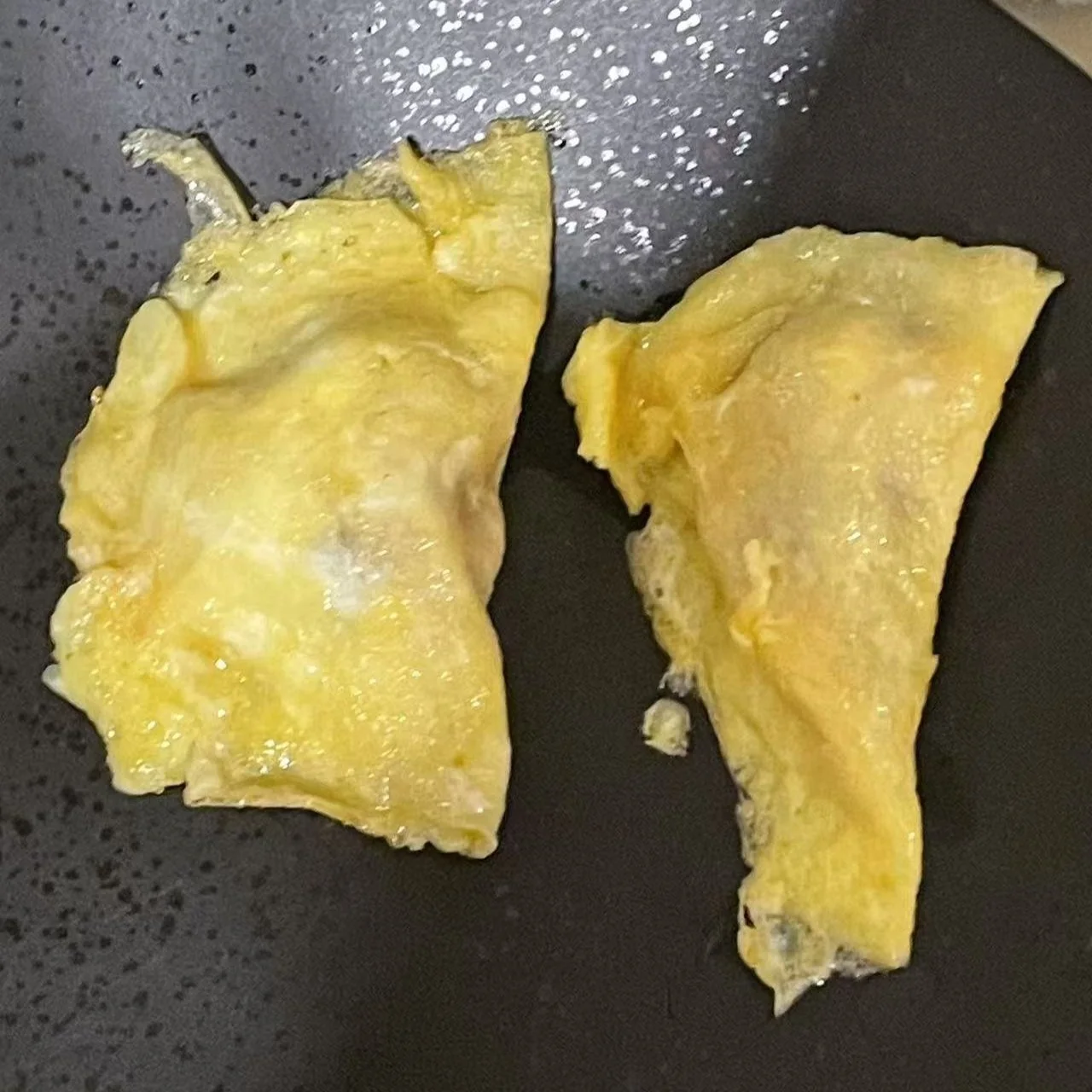“This is an art in preparing food as well as pictures…”
– – Zoltan Sepeshy, 1941
福德 (fú dé, *fortune & virtue, summum bonum?) is my sourdough starter baby, born in the Berkshires 150 years ago, is now used in a popular local bakery. Credit to Dave, who gave me the starter!
How is painting history like to me?
Beside using egg yolk or other dairy product to make painting, the history of cooking aligns with it. Every new recipe is influenced by a traditional dish, directly or indirectly; every sourdough contains its original starter, fed with fresh flour that provides rich protein. Every painting style overtime is all rooted in another earlier one, paintings can not be invented. History of tempera painting is like an old wild yeast that has been passed down and spread to the world. Time and region gave this wild yeast, which originated in Europe, a special flavor in 20th century America (magic realism, more on this later). The characteristics of tempera paintings are highlighted and weakened, this diversification, like the taste, is not subject to rational control, but the eccentricity of time that leads us to the place.
绘画的历史像是发酵面团,酵种一旦被传播出去就会随着当地的气候温度变化。并且只有人不断的为它注入新的面粉它的生命才得以延续。
a jar of chalk ground
how to look?
A Reflection on the unspeakable green, or the indistinguishable blue and yellow in Emerald (2024).
Making soup—the oil that floats on the surface resembles layers upon layers of color, an optical illusion. It demands the eyes with their ability to perceive depth, to detect the blood foam suspended between the oil and the broth.
The only difference is: there is no need to skim the foam in painting.
More answers in soooooooooooouuuup…
腌笃鲜 yān dū xīan
Literal meaning: The aroma and umami of slow cooking salted meat and fresh meat.
腌 yān: salted/ marinated, adj.
笃 dū: an onomatopoeia verb of slow cooking. *This is not a Mandarin word. It originates from the Wu dialect, spoken along China’s southeastern coast, where this dish was first created.
鲜 xīan: 1. fresh (pork), adj.
2. In this context, if may also be interpreted as aroma and umami, yum, n.
Main Ingredients: Pork belly cured for 3 days w/ Sichuan peppercorn, small cubed pork short rib pieces, venetian knot (tofu skin knot), stem part of celtuce, EGG DUMPLINGS!; sub ingredients: ginger, scallion.
蛋饺 dàn jiâo *egg dumpling
unprofessional version, ingredients: 1. egg blend with some salt, one egg is good for three dumplings; 2. the inside is a mix of ground pork, minced ginger and scallion, dark and light soy sauce, a pinch of white pepper.
Note: This ground pork seasoning recipe is also good for meat ball soup, and many many other Chinese dishes.
how to time when painting?
To make an egg dumpling, set the pan on low or medium low depending on the stove, light oil, pour a tablespoon full egg and salt blend on the pan, use the same spoon to draw a circle with the egg liquid. Then observe… when the edge of the circle is about to coagulate, scoop a half thumb size ground pork into the circle near one side, then fold the other side QUICKLY! This process demands patience, but not to much patience.
It’s all about control and balance — a delicate negotiation between my hands, time, and how much water to add in the egg tempera emulsion. Just like making egg dumplings, when the egg wrapper starts to set into a jelly-like texture, that is the perfect moment to fold it. Similarly, when working on a painting, if the previous layer of pigment dries too fast, the next won’t blend into it smoothly; but if it’s not dry enough, the layer may break apart, just like an undercooked egg skin.
The egg dumplings in the 腌笃鲜 soup has an answer for egg tempera painting. THANK YOU CHICKEN!!
!!! UNDER CONSTRUCTION !!!
© 2025 Wendy Jie Wang.




